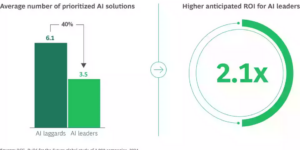Global insurers that have been tagged as systemically important by the Financial Stability Board may not help their cause by breaking up lines of business in efforts to de-designate themselves, analysts at Standard & Poor’s say.
The title of the report published by S&P on Wednesday—”G-SII Regulation: For Global Insurers, A Long Tunnel With Dim Light Ahead”—sums up the rating agency’s thinking on both the “globally systemically important insurer,” or G-SII, tags from the FSB and on U.S. Financial Stability Oversight Council’s designations of U.S. systemically important financial institutions, or SIFIs.
“In our view, there’s no guarantee that simplification [of business] will automatically ‘de-SIFI’ these insurers,” the S&P report says. Noting the tactical responses of three U.S. SIFIs, which are also G-SIIs—acceptance by American International Group, inaction by Prudential, and opposition by MetLife—and the pressure from active investors to devise strategies to “de-SIFI,” the report concludes that the designation process is clouded by “undefined criteria and a high likelihood of further modifications—perhaps over extended time periods.”
And what’s the biggest source of uncertainty for G-SIIs? That might be the work being done to establish “a truly unified and effectively implemented capital standard,” said S&P Credit Analyst Tracy Dolin in a statement about the report.
“Given jurisdictional differences and the aggressive time frame for G-SII capital standard implementation, we could be facing a situation like we did with Solvency II that required a series of extensions,” she said. The report specifically suggested that the 2019 deadline in place for implementing G-SII capital standards is “overly aggressive and likely to face delays.”
In the United States, the report adds that U.S. SIFI holding company capital requirements have not been specified, adding “layers of confusion and complexity.” It also notes that the U.S. SIFI designation process is less transparent than the G-SII process.
And there’s even reason for the large global insurers other than the nine G-SIIs to worry about the higher capital standards in the works for the G-SIIs, S&P notes, referring to the internationally active insurance groups (IAIGs) that will also be designated by supervisory colleges for enhanced oversight. “We anticipate proportional G-SII-like regulation for this subgroup, including higher capital standards and possible creation of resolution plans,” S&P says.
The International Association of Insurance Supervisors (which is not a regulatory body and the only insurance member of FSB), is the player in this effort that is actually working on developing the insurance capital standards for IAIGs, with an added higher loss absorbency amount for the G-SIIs. S&P notes that the IAIS is not planning to publish a list of the roughly 50 insurers included on the IAIG list. The S&P report, however, does list candidates that the rating agency has identified as likely members of the IAIG group—including several reinsurers.
S&P believes that while reinsurers meet some of the criteria to be IAIGs—insurance groups with total assets of at least $50 billion or gross written premiums of at least $10 billion written in three or more jurisdictions, with at least 10 percent total written outside of the home jurisdiction—they aren’t likely to be designated as G-SIIs.
“There is a derivative effect to the nature of business between insurers and reinsurers; these dimensions reduce systemic risk on the financial system,” S&P notes.
According to S&P, G-SII eligibility is largely influenced by nontraditional and noninsurance (NTNI) activities.
While G-SII capital requirements for NTNI business appear to be higher than capital requirements in S&P’s risk-based capital model, G-SII capital requirements in the works for traditional insurance business and asset-related risks (excluding NTNI) are generally lower than levels that could be considered equivalent to the ‘BBB’ confidence level in S&P’s model.
“Although we do not expect G-SIIs to face difficulty meeting additional global capital requirements for traditional insurance business, we can foresee disincentives for them to engage in or expand certain nontraditional, non-insurance (NTNI) activities. And they could make capital-management shifts as their risk profiles evolve,” the report says.
From a ratings perspective, S&P sees potential positive and negative long-term credit rating ramifications of a G-SII tag. “A future regulatory capital requirement that’s higher both directionally and qualitatively than the company’s current adequacy would be credit-positive, in our view. However, if these companies have to reprice products or exit certain markets to reduce capital strain, this could hurt their competitive positions,” the report says.





















 2024 Second on Record for Most Tornadoes in the U.S. in a Year
2024 Second on Record for Most Tornadoes in the U.S. in a Year  Lemonade: 700K Customers on the Car Waitlist
Lemonade: 700K Customers on the Car Waitlist  AM Best: Tariff Uncertainty Could Lead to Credit Rating Changes for Insurers
AM Best: Tariff Uncertainty Could Lead to Credit Rating Changes for Insurers  Roof Repair and Replacement Costs Up Nearly 30% Since 2022: Verisk
Roof Repair and Replacement Costs Up Nearly 30% Since 2022: Verisk 








